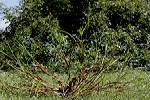
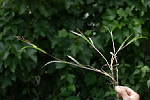
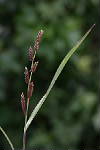
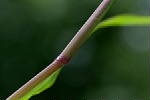
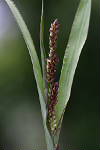
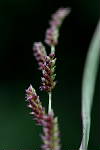
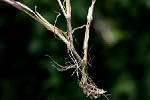
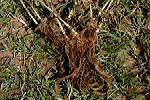
Botany Biology Phenology Ecology Distribution Agricultural importance Cultural control Biological control Chemical control
| Description : | Terrestrial, tufted, erect herb, rooting at nodes. Roots fibrous, white or brown. Stems flat, hairy. Nodes glabrous. Stipules absent. Leaves alternate spiral, sessile linear, more than 2 cm long/wide, apex acute, base clasping, parallel-veined. Leaf sheath present. Ligule absent. Flowers bisexual, grouped together in a terminal spike or panicle, sessile, purple or brown, petals not visible. Fruit a nut. |